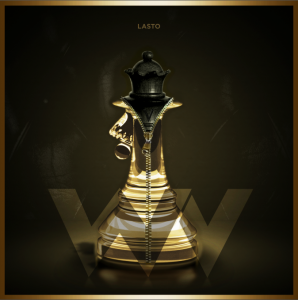
“I don’t want to spend my time on earth performing, yelling “Look At Me” or “Confirm My Humanity, Please” in various tongues. I have problems of my own.” – Ta-Nehisi Coates
One of the things that I’ve found most difficult to navigate as a black same-gender-loving man is the way it is assumed that “blackness” and “homosexuality” are supposed to be somehow mutually exclusive and in conflict with one another. And the temptation is to choose one that controls. And while it is certainly true that the “gay” construct is a largely White one, my race and my sexuality really do work in concert. They inform one another.
So you do have to move through life aware of these boxes – “black,” “gay,” “SGL,” “homosexual,” “man,” etc – but constantly finding ways to not have to tell everyone else that they aren’t necessarily your boxes. And that anxiety does, in some ways, become part of the experience. Not necessarily because you are confused or self-loathing, but because there is real work in operating in a world where you have to always be conscious of people trying to categorize you.
Add to that trying to be an emcee when “gay rapper” is seemingly more a contradiction in terms than “black gay” and you understand I think why so much of gay hip hop feels like it’s always trying to decide whether to be “gay” or “hip hop.”
LastO’s Where’s Vivian is the first hip-hop album by a black homosexual man that really gets that all of this shit is just a false choice. It feels like the first time that a gay/SGL rapper is aware of all the traps that being a “gay rapper” has – and falls into none of them, primarily by having clear-eyed view of who exactly he wants to be as an artist. There’s anxiety here. There’s confidence. There’s also tremendous vulnerability. And, perhaps most notably, there’s a sense of self that is more present than it ever was before. And that’s saying something, because Run A Lap is one of the single best opening salvos I’ve ever heard an emcee make. It’s nearly perfect (I’d have left off So Magical, to be honest) and, for me, made me think “Oh, so this is what gay hip-hop can be.”
Where’s Vivian ups the ante by being more personal, more open — and yet forthright about the anxiety about doing so. That anxiety is really a running theme throughout the album, from the intro Bitches Be Like… all the way through to the tongue-in-cheek boast of I’m Ur S.s. Pt. 2, that actually draws you in because it is so often the underside of the confidence that an emcee is supposed to feel. As he says on the opening track, 34th and 42nd: “Truth be told/I might not be/Who they was rootin for/Who they would like to see.” Or take Dream Wild, which features the talented Sony Cobain, where Lasto explores why his desire to be an emcee is so powerful, asking: “Like it’s a dream that a nigga can’t get?/But I’m here though/Weirdo/Been did the shit 4 years ago.”
Because the conversation around gay hip-hop to date has been about whether or not there will be an emcee that the broader hip-hop community can embrace – and if that individual would have to not be “too gay” in order to feel that embrace – it’s quite refreshing that LastO doesn’t shy away from sex at all. It is certainly true that there are less explicit discussions of sex on Where’s Vivian than there are on Not For Non-Profit, but it is also true that what is discussed on Where’s Vivian is far more mature and, to my mind, representative of black gay men. Nearly every reference to sex also includes a reference to HIV, which is important given the rates of HIV in black gay communities and the anxiety that causes in the community. Even his love song to his boyfriend, For Tonight, is tinged with the always-present concern about the repercussions of sex:
And this consensus that love is for a nigga who acts like a bitch
is to keep niggas doing shit that kills us
Cause you know where ya dick is
Can you tell by looking exactly where that HIV is?
Perhaps the most amusing expression of Lasto’s anxiety is his ambivalent relationship to his beauty. On the album’s standout track, its centerpiece, Barcelon, Lasto laments: “I was told to undress; had to haggle to keep the hat and shit/Management wanted me to be a woman wearing Mac on lips/Ya’ll know that’s a Manolo slingback that I just cannot fit.” And then builds a whole song joking about how he’ll begrudgingly accept being a sex symbol on I’m Ur S.s. Pt. 2. and admits “Flaunt it?/Fuck it that’s in me.”
In a year when a lot of really talented artists put out uneven, messy albums, it’s really remarkable that Where’s Vivian is such a stunningly complete album experience. It’s not fair to pick a favorite because you really should always listen to the album all the way through, but Barcelon (easily the best song on the album), 34th Or 42nd, and both I’m Ur S.S. are brilliant. And while 17 tracks for $6 is quite a deal, I might not have added Hunnid-Yard Stare at the last minute and can kinda do without Candy Clouds.
Ultimately though, Where’s Vivian fulfills the promise of Run A Lap spectacularly, reminding us again that if there is anyone defining what it means to be a gay rapper in all its messy, complex humanity, it is LastO.

